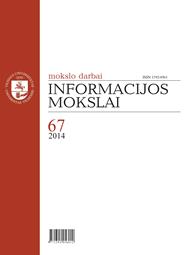Inovacijų strategijos organizacijose: tipai ir raiška
ORGANIZATION-LEVEL INNOVATION STRATEGIES: TYPES AND EXTENT
Author(s): Inga StankevičėSubject(s): Economy
Published by: Vilniaus Universiteto Leidykla
Keywords: innovation strategy; firm competitiveness; transition economy; industrial sector
Summary/Abstract: The paper is aimed at the identification of innovation strategies that are most typical of transition economies. For the investigation of innovation strategies, Community Innovation Survey (CIS) 2008 microdata from 16 European countries, collected by Eurostat, were used. The data include innovation activities (e. g. R&D, acquisition of machinery equipment or external knowledge, training, etc.), types of innovations (e.g. product, process, organisational, marketing, etc.), objectives of innovating (e. g. to improve communication and information sharing, to increase production capacity or flexibility, to enter new markets, etc.), innovation complexion (e. g. developed by the enterprise or enterprise group or developed other enterprises and/or institutions; product new-to market or new-to firm, etc.). The analysis includes 60 such variables; in addition, the variable that describes the sectoral embeddedness was used, and two firm competitiveness indicators were also employed. Six innovation strategies were identified, as well as their extents in 16 European countries, their sectoral coverage and their linkages with firm competitiveness. Ultimately, it is substantiated which innovation strategies and why are most typical of transition economies.
Journal: Informacijos mokslai
- Issue Year: 2014
- Issue No: 67
- Page Range: 76-94
- Page Count: 19
- Language: Lithuanian

